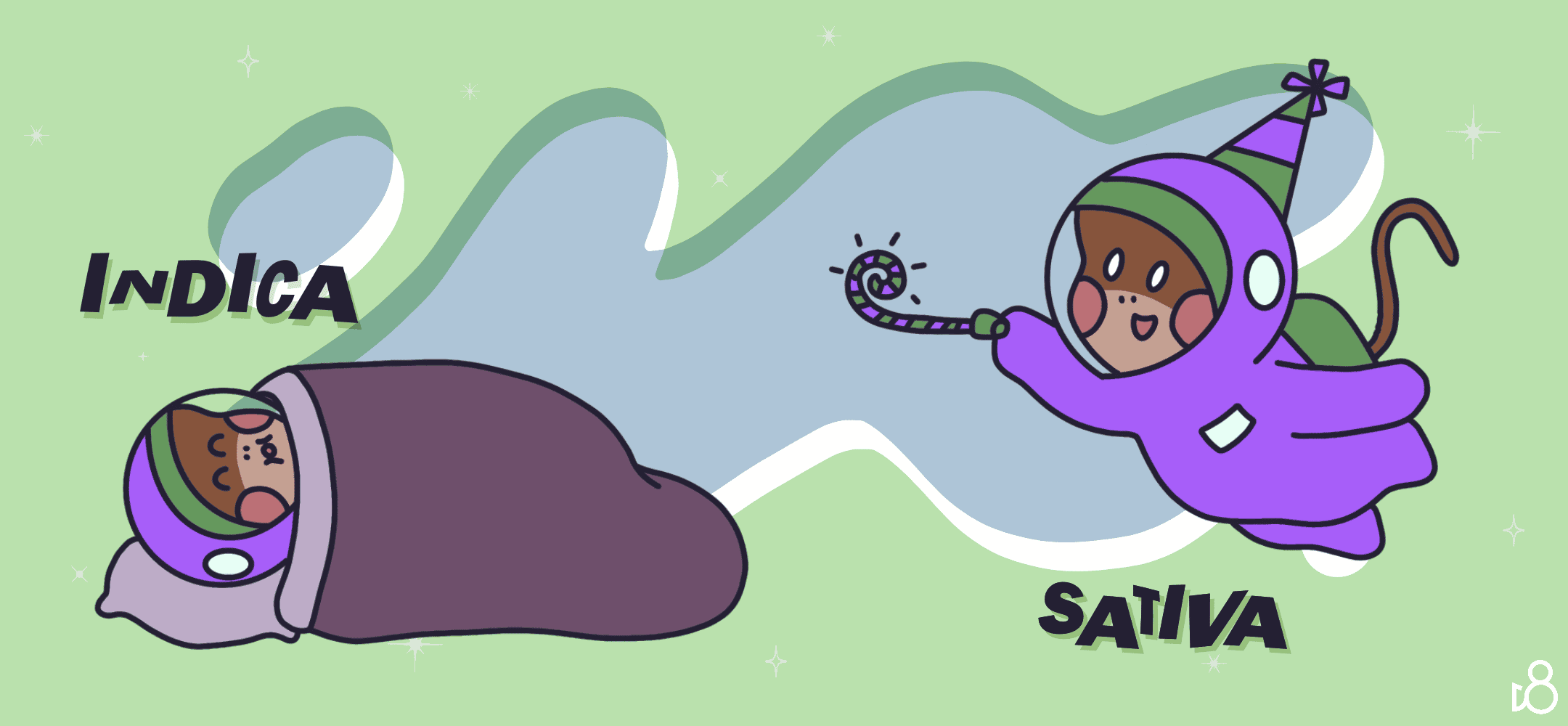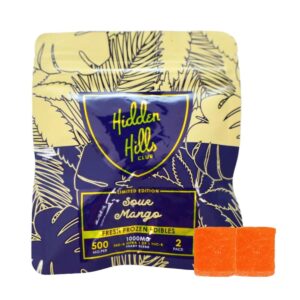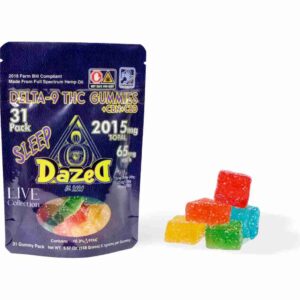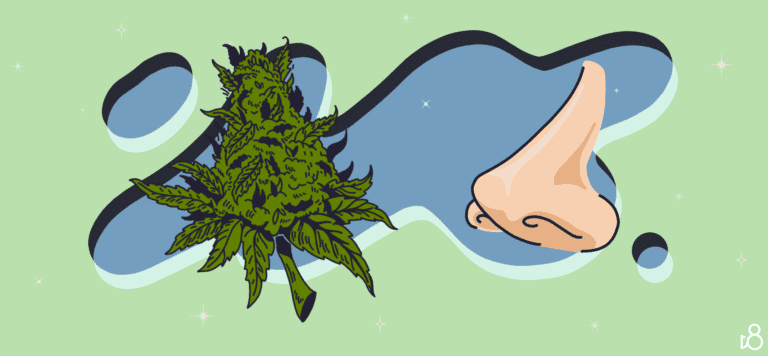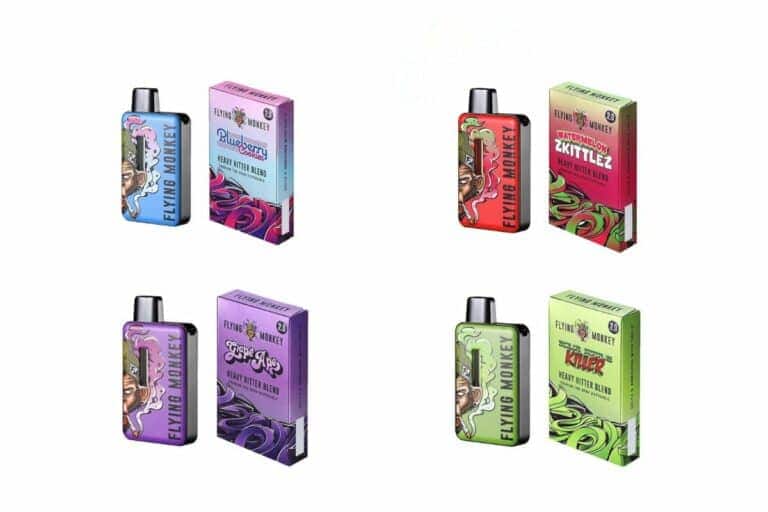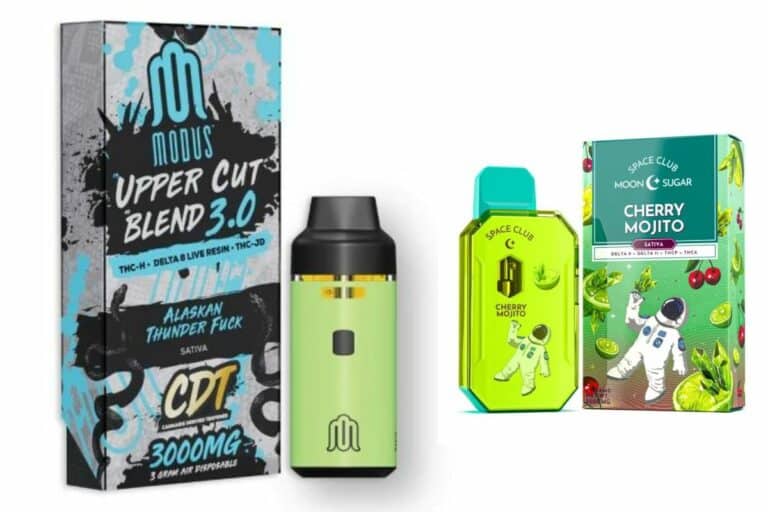Sativa vs Indica Edibles
Dive into a grown-up paradise of marijuana goodies, from gummies to chocolate bars and refreshing beverages, all calling your name for a magical adventure. Curious about how sativa and indica treats set the stage for your vibe? They’re like secret signs hinting at the voyage each bite will take you on, shaping the atmosphere of your experience. Stay tuned to unravel these mysteries and find the perfect buzz for you.
Sativa and indica strains have long been known for their distinct characteristics and effects on the consumer. Sativa strains are typically associated with more uplifting and energizing experiences, while indica strains are known for their relaxing and calming properties. Understanding the differences between these two types of strains can help consumers make informed choices when selecting edibles, ensuring they get the desired effects.
Key Takeaways
- Sativa and indica edibles come from different cannabis strains with distinct effects.
- Sativa strains provide uplifting and energizing experiences, while indica strains promote relaxation.
- Choosing the right strain and dosage is important for a responsible and enjoyable edible experience.
Sativa vs Indica: Origin and Species
Cannabis is a diverse and complex plant genus with several species, including Cannabis sativa, Cannabis indica, and Cannabis ruderalis. These species have distinct differences in morphology, origin, and effects on users.
Cannabis sativa is originally from Central America and Southeast Asia. It is characterized by tall plants with narrow, serrated leaves and loose, elongated buds. Sativa strains tend to have higher levels of THC, the psychoactive compound in cannabis, and lower levels of CBD, a non-intoxicating compound. As a result, sativa strains typically provide an uplifting, energetic effect.
Cannabis indica, on the other hand, originates from the mountainous regions of Central Asia. Indica plants are typically shorter and bushier with broader leaves and denser buds. Indica strains usually have a higher CBD to THC ratio, which generally results in a more relaxing, sedative effect on users.
Cannabis ruderalis is a lesser-known species native to Russia and parts of Eastern Europe. Ruderalis is a hardy plant that can survive in harsh environments, and it typically has lower levels of THC and higher levels of CBD compared to sativa and indica strains.
The classification of cannabis into these three species can be traced back to the 18th-century botanist, Carl Linnaeus, who documented cannabis and named it Cannabis sativa L. Later, other researchers classified the other species, creating the distinction between sativa, indica, and ruderalis that we know today.
In the context of edibles, both sativa and indica strains can be used to create infused products with differing effects. Sativa edibles might provide consumers with an upbeat, energizing experience, while indica edibles may offer a more relaxed, calming effect. However, it’s crucial to note that each strain’s effects can vary, and personal experiences may differ among users.
Chemical Profiles and Components
Cannabinoids
Cannabinoids are the active compounds found in cannabis plants that are responsible for the various effects of sativa and indica edibles. The most well-known cannabinoids are tetrahydrocannabinol (THC), cannabidiol (CBD), and cannabinol (CBN).
THC is the psychoactive compound responsible for the “high” feeling associated with cannabis consumption. Sativa edibles tend to contain higher levels of THC, providing a more energetic and uplifting experience. Indica edibles, on the other hand, have lower THC levels, leading to a more relaxing and sedative effect.
CBD is a non-psychoactive compound with numerous reported medicinal benefits, such as reducing pain, inflammation, and anxiety. CBD content in both sativa and indica edibles varies, and it is essential to pay attention to the CBD-to-THC ratio when selecting the best edibles for your needs.
CBN is another non-psychoactive cannabinoid, albeit less well-studied than CBD. It is believed to have potential sedative effects and may help promote sleep. While CBN is found in both indica and sativa edibles, it may be more prevalent in indica strains because of its potential sedative properties.
Terpenes
Terpenes are another group of compounds present in cannabis plants and play a significant role in differentiating sativa and indica edibles. Terpenes are responsible for the distinct aromas and flavors of various cannabis strains. Interestingly, they may also contribute to the overall effects of edibles, as some terpenes are known to have specific therapeutic properties.
Sativa edibles often have a higher concentration of the terpene limonene. Limonene is associated with uplifting effects, which may contribute to the energetic and invigorating experience of sativa edibles. Other terpenes commonly found in sativa strains include pinene and myrcene.
Indica edibles, on the other hand, tend to contain higher levels of the terpene linalool. Linalool is known for its calming and sedative effects, which align with the relaxing properties usually attributed to indica strains. Other terpenes typical of indica strains include caryophyllene and humulene.
In conclusion, while cannabinoids and terpenes play essential roles in differentiating sativa and indica edibles, it is crucial to note that individual plants within each category can produce varying effects. Paying close attention to the specific chemical profiles and components of an edible can help guide you in choosing the best option for your desired experience.
Effects of Sativa and Indica Edibles
Sativa Edibles Effects
Sativa edibles are typically known for their uplifting and energizing effects. They can help boost mood, sociability, creativity, and even concentration. This makes them a popular choice for those who want to experience a more head-focused high, perfect for daytime use or when engaging in activities that require mental alertness.
Some common sativa edibles effects include:
- Euphoria: Providing a sense of happiness and well-being
- Energy: An increase in mental and physical energy levels
- Creativity: Enhanced ability to think creatively and come up with new ideas
- Focus: Improved concentration for tasks that require attention
It is important to note that sativa edibles, when consumed in large amounts, may increase anxiety or cause paranoia for some individuals. It’s essential to start with a low dose and gradually increase as needed to find the optimal balance of effects.
Indica Edibles Effects
On the other hand, indica edibles are known for their calming and relaxing effect, with a body-focused high. These edibles are often preferred for nighttime use or when dealing with physical discomfort or stress.
Indica edibles may provide the following effects:
- Relaxation: A reduction in physical tension and overall sense of relaxation
- Sedation: Inducing a feeling of drowsiness or sleepiness, ideal for insomnia sufferers
- Pain relief: Effective in alleviating muscle aches, joint pains, or other types of discomfort
- Calming effect: Reducing feelings of stress, anxiety, or depression
Although indica edibles are generally considered to be more sedating, it’s crucial to remember that individual experiences may vary. Always start with a low dose and adjust as needed to achieve the desired outcome without adverse side effects.
Comparing Strains of Cannabis Edibles
Cannabis edibles are a popular method of consuming cannabis, offering a discreet and consistent method for experiencing the effects of different strains. In this section, we’ll explore the differences between sativa-dominant, indica-dominant, and hybrid strains when it comes to cannabis edibles.
Sativa-Dominant Strains
Sativa edibles are commonly associated with uplifting and energizing effects as they are derived from sativa-dominant strains, such as Sour Diesel, Blue Dream, and Strawberry Cough. These plants typically originate from regions like Central America. Sativa edibles are a popular choice for individuals seeking a boost in mood and sociability. Some common examples of sativa-dominant strains in edibles include Lemon Jack and Trainwreck.
- Energizing effects
- Mood enhancement
- Sociability boost
Indica-Dominant Strains
On the other hand, indica edibles are typically more relaxing and calming, as they are sourced from indica-dominant strains. Indica plants are often associated with a physically sedating effect, making them ideal for relaxation or as a nightcap before bed. Some popular indica-dominant strains used in edibles include OG Kush and Skywalker.
- Relaxing and calming effects
- Physical sedation
- Suitable for winding down
Hybrid Strains
Hybrid edibles are created from a crossbreeding process that combines the characteristics of both indica and sativa strains to produce a balanced effect. Examples of hybrid cannabis strains include Gorilla Glue and Trainwreck. These strains are carefully crafted to provide the best of both worlds, offering users a unique experience tailored to their preferences.
- Balanced effects
- Combination of uplifting and calming properties
- Created through crossbreeding
In summary, when choosing a cannabis edible, consider the effects you’re seeking and select between sativa-dominant, indica-dominant, or hybrid strains accordingly. Each strain type offers distinct effects, making it essential to choose the right one for your desired experience.
Choosing the Right Dosage and Strain for Your Needs
When selecting between sativa and indica edibles, it’s crucial to consider the desired effects, both for medical and recreational purposes. Each strain provides a different experience due to their unique terpene and cannabinoid profiles. Here are some factors to consider when choosing the right dosage and strain:
Dosage: Begin with a low dosage, especially for those new to cannabis edibles. Dosage can range from microdosing at 1-5 mg of THC to standard doses of 10-20 mg, depending on the individual’s tolerance and the intended effect. A gradual increase in dosage is recommended to find the optimal level for each user without overwhelming their system.
Medical needs: Both sativa and indica strains have potential therapeutic benefits depending on the user’s specific medical concerns. For instance:
- Pain relief: Indicas are typically favored for their body-relaxing and analgesic properties, making them more suitable for treating chronic pain and inflammation.
- Nausea and appetite: Indicas can help alleviate nausea and boost appetite, making them a suitable option for individuals dealing with gastrointestinal issues or undergoing chemotherapy.
- Stress and insomnia: The sedative effects of indicas can provide relief for those experiencing stress, anxiety, or insomnia.
On the other hand, sativas may be more effective for:
- Fatigue and increased focus: Sativa strains are known for their uplifting and energizing effects, which can help combat fatigue and promote focus and creativity.
- Headaches and migraines: The stimulating and cerebral effects of sativas can potentially alleviate headaches, migraines, and other related issues.
Recreational goals: The choice between sativa and indica edibles also depends on the user’s recreational preferences:
- For those looking for an energetic and social experience, sativa edibles might be the better choice, as they typically induce uplifting and euphoric effects.
- In contrast, those seeking relaxation and tranquility may find indica edibles more suited to their needs, due to their calming and sedative qualities.
Ultimately, it is important for users to consider their personal tolerance level, desired effects, and the specific weed strain being used in the edible. This will help ensure an enjoyable and effective experience tailored to the individual’s needs.
Consuming Edibles Responsibly
Whether you’re consuming sativa or indica edibles, it’s important to be responsible and informed. Edibles, such as gummies, can produce a different experience compared to smoking cannabis. The effects take longer to kick in and can be more intense, which makes proper dosing and pacing crucial to avoid negative reactions.
For first-time consumers or those trying a new product, it is recommended to start with a low dose and go slow. Most cannabis edibles from a dispensary will have a clear label displaying the THC percentage and serving size. Do not assume that a smaller edible will be less potent. Seek advice from a knowledgeable budtender if you’re uncertain about which edible to choose.
When trying homemade edibles, it can be difficult to determine the exact dosage, as THC content can vary significantly. Exercise caution and consider consuming a smaller portion than usual. Wait at least one to two hours before deciding to consume more, since the effects of edibles can take longer to set in.
As with any cannabis product, it’s essential to keep edibles out of reach of children and pets. Store them in a secure, labeled container to prevent accidental consumption.
Be mindful that each individual’s tolerance and sensitivity to edibles may differ, and some people might experience paranoia or discomfort. Others may become drowsy or feel strange, depending on the specific strain (sativa or indica) and the THC content. It’s recommended to consume edibles in a familiar, comfortable environment, preferably with friends or someone you trust.
By following these guidelines, you can enjoy the benefits of cannabis edibles safely and responsibly.
The Science Behind Sativa and Indica Classification
The classification of cannabis plants into Sativa and Indica varieties has been a long-standing practice in the cannabis industry. Though this classification is mostly based on anecdotal evidence, scientific research provides some insights into the differences between the two types.
The genetic makeup of Indica and Sativa plants plays a crucial role in their classification and effects. Indica plants are characterized by shorter, bushier structures, while Sativa plants are taller with narrower leaves. This distinction is related to the plants’ adaptation to their native environments – Indica plants originating from higher altitude areas with colder climates, and Sativa plants thriving in warmer, equatorial regions.
Chemovars, or chemical varieties, refer to the unique combination of cannabinoids and terpenes in a cannabis plant. Both Indica and Sativa plants have their own chemovar profiles, determining their medicinal and recreational effects. Cannabinoid profiles refer to the concentration of active compounds like THC (tetrahydrocannabinol) and CBD (cannabidiol), which contribute to the psychoactive and therapeutic effects of the plant.
Terpene profiles are the aromatic compounds found in cannabis plants, which also contribute to their effects. For example, Sativa strains typically contain higher levels of terpinolene, which has a citrusy aroma and is associated with uplifting effects. Indica strains, on the other hand, often have more myrcene, which has a musky scent and is linked to relaxing effects.
The nuanced effects of Indica and Sativa varieties can be attributed to the interplay of cannabinoids and terpenes resulting in different experiences for the user. However, it is essential to understand that this classification is not a strict demarcation, as the cannabis industry evolves, and cultivators continue to breed hybrid strains that combine traits of both types.
It is important to note that while the genetic differences between Indica and Sativa plants are evident, the distinction becomes less meaningful when applied to hemp, which is a type of Cannabis sativa plant with less than 0.3% THC. Hemp is primarily grown for industrial purposes, like fiber and seed production, and contains higher levels of CBD compared to traditional cannabis plants.
In conclusion, the classification of cannabis into Sativa and Indica varieties is largely based on genetic makeup, chemovars, and the effects produced by their unique cannabinoid and terpene profiles in the user. While this classification has its practical applications, it is important to acknowledge the complexities and blurred lines within cannabis plants and their effects in the ever-evolving cannabis industry.
Metabolism and the Effects of Edibles
When consuming cannabis edibles, whether they are sativa or indica, it’s essential to be aware of how they affect the body’s metabolism. Edibles are processed differently than other methods of consumption, specifically through the liver, which alters the cannabinoids’ effects. This process is known as the “first pass metabolism” 1.
Sativa edibles are associated with energizing effects, often leading to increased sociability and creativity. These types of edibles are popular among people seeking a mood boost or a stimulating experience. On the other hand, indica edibles are known for their more relaxing effects, which can help with sleep and stress relief. The difference in effects between the two types can be attributed to the unique balance of cannabinoids and terpenes present in each plant 2.
It’s important to note that the psychoactive effects from edibles generally take longer to onset than other methods of cannabis consumption. This is due to the time it takes for the cannabinoids to be metabolized and absorbed into the bloodstream. On average, it can take anywhere from 30 minutes to 2 hours for the effects to be felt, depending on the individual’s metabolism and the edible’s specific composition 3.
When baking cannabis edibles, it’s crucial to be mindful of the temperature used during preparation. High temperatures can degrade or alter the cannabinoids, which can affect the end product’s potency and overall experience. For instance, maintaining temperatures below 350°F (175°C) can help preserve essential cannabinoids like THC and CBD 4.
In conclusion, understanding the metabolism of edibles can help users better gauge the right dosage and type of edible (sativa or indica) for their preferences and needs. Being aware of the onset time and necessary baking techniques will ensure a more enjoyable and effective edible experience.
Frequently Asked Questions
What are the differences in effects between sativa and indica edibles?
Sativa edibles are known for their uplifting and energizing effects, whereas indica edibles provide relaxation and potential pain relief. The effects of both types of edibles can vary depending on the specific strain’s terpene and cannabinoid profile1.
How do edible experiences vary between sativa, indica, and hybrid strains?
Sativa edibles primarily affect the brain, offering energization and an uplifted mood. Indica edibles, on the other hand, work on the entire body, promoting relaxation and a possible reduction in pain. Hybrid edibles fall somewhere between these two spectrums and can offer a more balanced set of effects, depending on the strain’s particular combination of sativa and indica2.
Which type of edible is recommended for anxiety relief?
Indica edibles are generally suggested for those seeking anxiety relief, due to their relaxing and calming effects3. However, individual reactions can vary, and it is vital to choose a strain that meets your unique preferences and needs.
What kind of edible is more suitable for improving sleep quality?
Indica edibles are more fitting for improving sleep quality, as their effects are typically relaxing and sedative in nature4. By promoting a greater sense of calm and relaxation, indica edibles can enhance sleep quality for some individuals.
Do indica edibles generally provide a stronger effect than sativa?
The strength of an edible’s effect is highly dependent on factors such as dosage, individual tolerance, and the particular strain’s cannabinoid and terpene profile. Therefore, it is not accurate to generalize that one type of edible is more potent than the other. However, indica edibles often lead to more intense body relaxation, which could be perceived as a “stronger” effect by some people5.
Is either sativa or indica more recommended for enhancing focus in edibles?
Sativa edibles tend to be more recommended for those seeking enhanced focus due to their generally stimulating and uplifting qualities6. These effects may be attributed to the greater presence of specific terpenes and cannabinoids that enhance focus and productivity. However, individual experiences may vary, and one’s ideal strains for concentration might differ based on personal preference.

